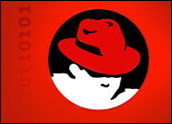
As the new year begins, the experts agreed that the big story for 2004 in the open-source world — and one of the biggest in the larger realm of IT — has been the growth of Linux and its acceptance as a mainstream choice for business. It’s a trend that industry analysts expect to continue, even accelerate, in 2005 and for at least several years to come.
“The biggest story for me in the last year was the commercialization of open source,” said John Rymer, vice president of research in application development and infrastructure for Forrester. “For example, JBoss finally settled on a commercial business model and built out its product set, Apache came out with Geronimo … and HP’s mySQL initiative was encouraging.
“I think this is just huge for all of our clients in IT who were worried about infrastructure issues, possible collapse [of open-source companies and communities], and support problems,” said Rymer.
The bottom line? “[IT buyers] will have real, additional choices,” he said.
Hitting the Enterprise Mainstream
Steve Trotta, an analyst with Technology Business Research, agrees that Linux did better last year than anyone had predicted. “First and foremost, the rate of growth of Linux in the server OS market has been a big surprise,” he said. “I think that IDC reported growth of 43 percent in the latest quarter, which was a pretty surprising pace, especially compared to Windows growth of 13 percent — obviously on a much bigger base.”
Trotta said that the other big development of 2004 that can be expected to accelerate in 2005 is the increasing interest in Linux and open software in China and the Far East, which he says could have worldwide implications. “IBM’s sale of its PC business to China toward the end of this year could influence the sales of Linux. In particular, it could have a big impact on the Linux desktop, because China, South Korea, and Japan are adamant about reducing their dependence on Microsoft,” he said.
Also, Trotta said that when this trend is combined with the importance of Asia as the manufacturer of much of the world’s low-cost personal computers, the end result might be an upswing in worldwide popularity of the operating system. “They’ve already reduced the price in most of the easier, more obvious ways. It costs about US$125 to license a copy of Windows, and that’s significant when you’re talking about a computer that only costs a few hundred dollars. Having a free or low-cost operating system like Linux could become a lot more important as companies try to compete on price,” said Trotta.
Changing Business Models
Forrester’s Rymer said he has seen in a shift in revenue from a software license model to support and maintenance. “For instance, Sun is now giving its OS product — Solaris — away, but they’ll make money on support an maintenance,” he said. “The open-source movement is driving that.”
Rymer said he expects the trend to continue and probably accelerate in 2005.
“Linux is now often considered and used as a file server, a database server, a java server or a print server,” said IDC analyst Dan Kusnetzky. “Firms that are feeling the [economic] pain in software costs are looking to open-source alternatives, and they’re running open-source pilots.
“Sometimes, even when they don’t choose open-source software, they’re able to use a successful pilot to get their suppliers to offer them the ‘Red Hat discount,’ because suppliers know that a competitive open-source alternative is being considered,” he said.
Virtualized Environments
Many companies are moving to “virtualized environments” in an effort to avoid costs, said Kusnetzky, and they’re finding that it’s cheaper to manage a myriad of “virtual boxes” running within the mainframe on enterprise-class Linux than to manage the same number of physical machines on a network.
“They’re looking for software that is self-installing, self-managing and self-healing,” he explained. “Linux is often at the heart of these systems.”
These environments go by a variety of different names, such as IBM’s “on-demand” initiatives and HP’s “adaptive infrastructure,” depending on the vendor and what the vendor wants to emphasize. Kusnetzky estimates that the total market for such virtualized environments isabout $4.2 billion, growing to about $14.2 billion by 2008.
“Linux is starting to move from the basic infrastructure of file and print servers where it has been used, to a platform for high-performance computing in some markets, such as financial services and transportation, where simulation is important.”
But just as important, says Kusnetzky, is that Linux “is starting to support the complex of commercial applications — such as databases — that make up enterprise computing environments.” The coming year will see these trends accelerate, experts predict, making 2005 a happy new year for open-source supporters.




















































